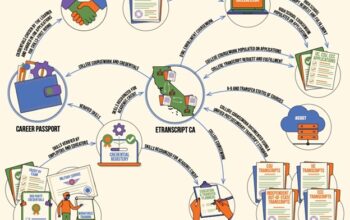Thanks to the Hollywood Slicky and his Sacramento Democrats, California is in a doom loop. San Fran and Oakland are dead. Los Angeles is dying quickly—in one week three major “flash mobs” stole or caused destruction of over one million worth of property—in Glendale, Canoga Park and Century City.
“The Federal Bureau of Economic Analysis reported in June that California’s gross domestic product – the total of goods and services – in the first quarter was one of the nation’s slowest growing at 1.2%, roughly a third of the growth seen in rival states Texas (3%) and Florida (3.5%). Other states ranged to as high 12.4% in North Dakota.
The BEA’s quarterly report on personal income growth was similarly mediocre. Nationally, it grew by 5.1%, but in California it was scarcely a blip at .7%, very near the bottom. Texas saw 6.7% personal income growth and Florida 7.9%.
It is on this record that Gavin Newsom is running for President! You though Biden was bad—but at least he has an excuse, he has dementia. Maybe it is the hair gel that makes Newsom sound so ridiculous?
While US economic outlook improves, California’s remains muddy and mediocre

BY DAN WALTERS, CalMatters, 8/13/23 https://calmatters.org/commentary/2023/08/economy-outlook-improves-california-muddy/
IN SUMMARY
With personal income growth stagnant and prices still rising, California’s economy is trailing many national trends moving the other direction.
Late last month, the Federal Reserve announced the latest incremental raise in its key interest rate, pushing it to the highest level in 22 years, as it continues to battle what it calls persistent inflation.
The increase, a quarter of 1%, renewed the debate among economists and politicians over whether the Federal Reserve’s anti-inflation actions will slow the economy into what’s termed a “soft landing,” or ignite a recession.
The recession that many economists thought would have happened by now hasn’t raised its ugly head, leading to I-Told-You-So’s from the ones who hadn’t seen a downturn on the horizon.
“Much to the chagrin of those who have been predicting otherwise, the U.S. economy has stubbornly continued to grow and 2023 is shaping up to be a better year than 2022,” one of the optimists, California economist Christopher Thornberg wrote recently.
“This isn’t to say that we don’t recognize signs of stress in the economy driven by higher interest rates and the recent bout of inflation,” Thornberg continued. “Rather, we’ve never viewed these issues as rising to the level of being systemic given that they were caused by the same thing that has kept consumer spending supercharged – the excessive stimulus thrown at the economy during the pandemic.
“The greatest risk, as we have seen it, was always the undue tightening by the Federal Reserve, which was implemented in response to their original sin of excessive loosening.”
There are, however, two sides to the economic coin – one steeped in the numbers economists love and the other the admittedly unscientific concerns of ordinary citizens.
A recent Public Policy Institute of California poll found that Californians overwhelmingly believe that bad economic times lie ahead, based in part on experiences with inflation in housing, food, fuel and other living expenses.
Those sour expectations may be more than just emotion. While the nation as a whole seems to be doing fairly well, as President Joe Biden reminds us almost daily in anticipation of a re-election campaign next year, California’s economy is just so-so.
California’s unemployment rate in June was 4.6%, which doesn’t sound bad – certainly much lower than it was when the state’s economy shut down during the COVID-19 pandemic, pushing the jobless rate to over 16%.
However, it was higher than it had been a year earlier and – this is rather sobering – was the second-highest of any state to Nevada’s 5.4%, and more than twice as high as New Hampshire’s nation-lowest 1.8%.
California’s other economic indices are similarly weak.
The Federal Bureau of Economic Analysis reported in June that California’s gross domestic product – the total of goods and services – in the first quarter was one of the nation’s slowest growing at 1.2%, roughly a third of the growth seen in rival states Texas (3%) and Florida (3.5%). Other states ranged to as high 12.4% in North Dakota.
The BEA’s quarterly report on personal income growth was similarly mediocre. Nationally, it grew by 5.1%, but in California it was scarcely a blip at .7%, very near the bottom. Texas saw 6.7% personal income growth and Florida 7.9%.
Anemic personal income growth has a real-world impact when it attempts to cope with inflation that’s still plaguing California’s families and it also is one of the underlying reasons the state is experiencing declines in personal income taxes and the resultant multibillion-dollar budget deficits.
Citing a “particularly muddy” economic outlook, the Legislature’s budget analyst, Gabe Petek, believes that the state faces bigger budget deficits than Gov. Gavin Newsom and legislative leaders have baked into their new budget.
It’s just as muddy for the family budgets of nearly 40 million Californians.



